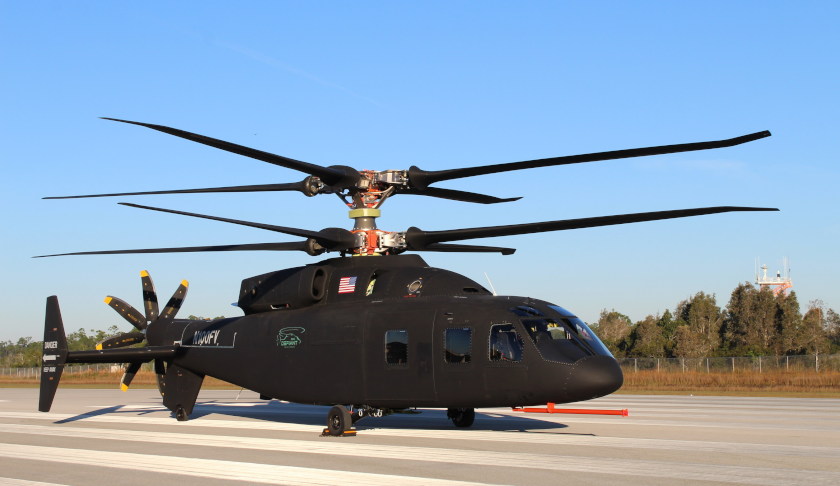As Australia’s responsibilities in the region continue to evolve, Lockheed Martin, Sikorksy and Boeing have geared up to present the Future Vertical Lift capability to support the ADF.
To continue reading the rest of this article, please log in.
Create free account to get unlimited news articles and more!
As Australia’s responsibilities in the region continue to evolve, Lockheed Martin, Sikorksy and Boeing have geared up to present the Future Vertical Lift capability to support the ADF.Beginning in 2011, the Future Vertical Lift (FVL) program will see next-generation replacements for traditional rotary airframes like the UH-60 Blackhawks, CH-47 Chinook and OH-58 Kiowas. The FVL program is broken down into four key areas, delivering different capability packages, specifically:
- JMR-Light: Scout version to replace the OH-58 Kiowa, with introduction planned for 2030;
- JMR-Medium: Utility and attack versions to replace the UH-60 Blackhawk, with introduction planned for 2027-28;
- JMR-Heavy: Cargo version to replace the CH-47 Chinook, with introduction planned for 2035, although Boeing expects 2060;
- JMR-Ultra: New ultra-sized version for vertical lift aircraft with performance similar to fixed-wing tactical transport aircraft, such as the C-130J Super Hercules, with introduction planned for 2025.
Raider is a next-generation light tactical prototype helicopter capable of carrying six soldiers and external weapons that will redefine helicopter flight during the 21st century.
The Defiant is a next-generation medium tactical lift prototype helicopter, capable of carrying up to 12 soldiers and four aircrew. Both aircraft utilise the proprietary X-2 counter-rotating coaxial main rotors and pusher propeller system, designed by Lockheed Martin subsidiary Sikorsky, which provides improved range, speed and payload for both platforms.
Neale Prescott, business development director, Lockheed Martin Rotary Mission Systems (RMS), explained to Defence Connect, "For Australia, we are looking at the ARH replacement program gathering pace in the early 2020s and then the MRH-series battlefield, airlift helicopter being replaced in the mid-2020s. From Lockheed Martin’s perspective, the Defiant and its X-2 system will not only be mature technology suites, they will also enhance the capabilities currently available to the ADF."
Sikorsky and Boeing have designed the SB-1 Defiant to provide the right combination of speed, lift and range that are paramount to both the assault and attack missions while increasing overall manoeuvrability and agility.
Developed with 85 per cent commonality between attack and assault aircraft, the Defiant will reduce development and life cycle costs and ensure minimal disruption or loss of existing rotorcraft expertise. Its open mission systems architecture allows rapid technology and capability insertion to meet evolving FVL requirements and provide the US military with evolutionary sustainability, affordability and readiness for years to come.
"Building on the successful roll-out and introduction of the Romeo series of helicopters with the RAN, Defiant provides the next-level of operational capability and we are focused on developing a roadmap to integrate key-technologies as they mature and both the Defiant and X-2 technologies will play a key role in that," Prescott said.
The aircraft’s capabilities are largely derived from the X-2 rigid co-axial rotor system, which has already proven its airworthiness through flights of the X-2 and S-97 Raider. With two coaxial rotors on top that rotate in opposite directions, the extra lift from each rotor’s advancing blade balances out the diminished lift from the opposite side’s retreating blade to eliminate retreating blade stall.
As Australia's role in the region continues to evolve, particularly in increasingly contested, congested and challenging environments, major ADF expeditionary platforms like the Navy's LHDs become increasingly vulnerable. Both Raider and Defiant, through increased capability, serve to enhance tactical and strategic capabilities available to the ADF.
"The increased range, endurance, manoeuvrability and payload provides Australia with an operational, tactical and strategic advantage by ensuring key-platforms like LHDs are out of the range of enemy fire, while enabling the force to project force with a high-degree of survivability, with outstanding ISR capabilities, integrating into the broader fifth-generation force," Prescott added.
Stephen Kuper
Steve has an extensive career across government, defence industry and advocacy, having previously worked for cabinet ministers at both Federal and State levels.

 Login
Login








